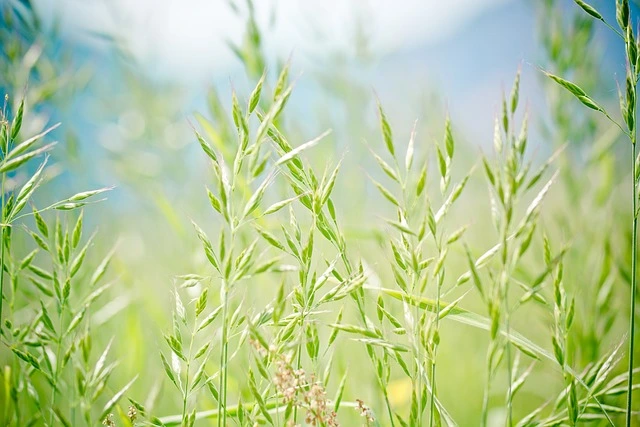Best Fescue A Resilient and Versatile Grass for the Garden
Table of Contents
Fescue grasses, known for their adaptability and beauty, have become a favorite for U.S. gardeners looking to incorporate resilient, low-maintenance turf and ornamental grasses. Festuca species offer versatility, from creating lush lawns to adding texture in ornamental borders and groundcovers. Here’s a closer look at why Fescue deserves a place in your garden and how to care for it across various U.S. climates.

Types of Fescue and Their Uses
Fescues are generally divided into cool-season grasses, thriving in moderate to cooler climates. Here are some popular types for landscaping:

- Fine Fescue: Ideal for low-maintenance, shady areas, fine fescues (e.g., Festuca rubra) include creeping red, hard, and sheep fescue. These grasses are popular for eco-friendly lawns and meadows.
- Tall Fescue: Known for its drought tolerance, tall fescue (Festuca arundinacea) is often used in lawns, especially in regions with hot summers. It establishes a dense turf and withstands foot traffic well.
- Blue Fescue: As an ornamental grass, blue fescue (Festuca glauca) is prized for its unique, silvery-blue color. It adds interest to garden borders, rock gardens, and containers.
Planting and Caring for Fescue
- Soil Preparation: Fescues prefer well-drained soil, although they can tolerate clay or sandy soils. Adding organic matter can help improve drainage and nutrient content, particularly for ornamental fescues.
- Sunlight Needs: Most Fescues thrive in full sun to partial shade. Fine fescues tolerate more shade than tall fescues, making them suitable for under trees or shaded garden areas.
- Watering Requirements: Fescues are drought-tolerant once established, but newly planted seeds or sod require regular watering until the roots are established. For established fescue lawns, water deeply and infrequently.
- Fertilizing: Use a low-nitrogen, slow-release fertilizer in early spring and fall. Avoid over-fertilizing, as this can lead to thatch buildup and weak growth.
- Mowing and Maintenance: Fescues grow best when mowed at a higher height—typically around 3 inches. This height encourages a strong root system and helps retain moisture, essential for hot U.S. regions.
Regional Considerations for Fescue in the U.S.
- Northern U.S.: Fescue, especially fine varieties, performs well in cooler climates with consistent moisture. Blue fescue’s color holds especially well in these regions.
- Southern U.S.: Tall fescue is well-suited to the warmer temperatures, especially in transitional zones where summers can be hot but winters mild. Its drought tolerance is ideal for areas with inconsistent rainfall.
- Western U.S.: For dry, arid regions, blue and sheep fescue can add ornamental value without needing excessive water. Choose varieties suited for drought-prone climates, such as Festuca idahoensis.
Design Ideas with Fescue
- Mixed Borders: Combine blue fescue with flowering perennials and low-growing shrubs for a pop of color and texture.
- Meadow Gardens: Mix fine fescue with wildflowers for an eco-friendly, low-maintenance meadow or pollinator-friendly lawn alternative.
- Container Gardens: Blue fescue’s compact size makes it perfect for containers, adding a cool-toned accent to patios or entryways.
Pests and Diseases
Fescues are generally resistant to pests and diseases, though they may occasionally experience issues like brown patch or dollar spot in overly humid conditions. Proper spacing, watering in the early morning, and aerating the soil can help minimize these problems.

Conclusion
Fescue grasses offer flexibility, beauty, and resilience across U.S. garden landscapes. Whether you’re creating a traditional lawn or a stunning ornamental display, Festuca spp. brings both function and aesthetic value to your garden. Embrace this adaptable grass for a low-maintenance, sustainable choice that thrives in many U.S. climates.


Leave a Reply